The Chinese Spring Festival, commonly called the Lunar New Year, is not just a holiday—it is a deeply rooted expression of culture, family, and aspirations. In this blog post, we examine the fundamental components of this celebration by looking at its traditions and modern adaptations. The article covers everything from the ancient practices of ancestor veneration and feasting to the modern harnessing of fireworks and social gatherings, highlighting how the Spring Festival serves as a bridge between different temporal contexts. By learning about this festival’s history alongside its contemporary interpretations, the readers will gain a deeper understanding of the magic and cultural significance it holds through the ages. Come with us and attempt to peel back the layers of one of China’s most loved festivities!
What is the Chinese New Year, and why is it called the Spring Festival?
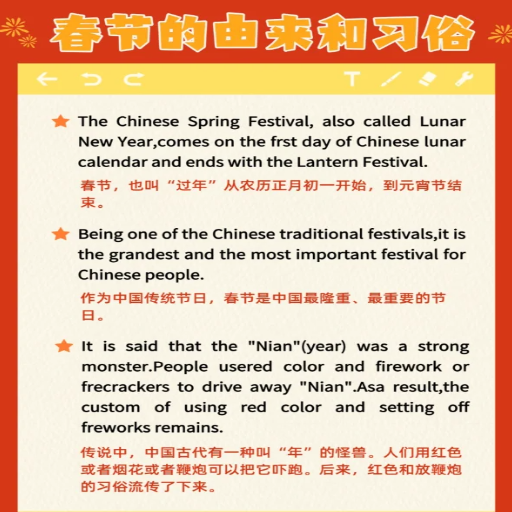
What is the Chinese New Year, and why is it called the Spring Festival
Spring Festival, also called the Chinese New Year, is the most celebrated holiday in China, where people reunite to celebrate the traditional event that marks the arrival of the new lunar calendar year. The term Spring Festival was derived since it takes place during spring, which is a time when the world starts to grow anew and differs from the cold atmosphere of winter. This festival can be traced back to agricultural roots because, back in the day, this festival was associated with weather and setting up for future crops. This festival is merged with modern celebrations while keeping its original spirit, making it an outstanding season for experiencing cultural events, traditions, and family gatherings.
Understanding the lunar calendar and its significance
A lunar calendar is a method of tracking time dependent on the movements or phases of the moon, with every month starting with a new moon; in comparison to the solar calendar, which is based on the orbit of the planet around the sun, a lunar calendar tracks time via days. This brings the total to 354-355 days for the lunar year, whereas the solar counterparts total from 365 to 366 days. This divergence can be selected with some lunar and Chinese lunar calendars, which include leap months roughly every 3 years.
The lunar calendar is significant due to its cultural, agricultural, and religious value. For instance, setting a time frame for events like the Chinese Spring Festival and Ramadan in the Islamic world is essential. All lunisolar calendars assist a community in organizing their activities alongside natural occurrences, allowing important rituals, celebrations, and agricultural activities to take place in harmony with nature.
The origins of the Spring Festival in Chinese culture
The Spring Festival, known as the Chinese New Year, originated more than four thousand years ago from myths related to ancient farming. In time, it developed from a festival to celebrate the end of winter and the start of the growing season according to the lunar-solar calendar. This festival was an integral part of the lives of ancient farmers because it was a time when they paid respect to various gods and ancestors and sought blessings for the forthcoming harvest.
One famous legend associated with the holiday’s history revolves around “Nian” – a beast who would attack villages at the end of the year. To ward “Nian” off, people made loud noises with firecrackers and wore red, which later became symbolic features of the celebration. From a more practical approach, the timing of the Spring Festival is based on the Chinese lunisolar calendar; it is celebrated on the first new moon of the year and falls between January 21st and February 20th on the Gregorian calendar.
Festivals offer an excellent opportunity to connect with people and experience unique traditions, and the Chinese New Year brings people together. Even with changes in modern society, this festival remains one of the most important events in China. People deeply care about it, especially the Chinese communities living overseas.
How the celebration marks the beginning of a new year
The celebration of the Lunar New Year marks the transition period of moving on to the new year, filled with joy, change, and growth. The most important part of the Lunar New Year celebration is preparing for it, which entails cleansing one’s self of negative energy while welcoming positivity. Spending time with family strengthens relationships and symbolizes a peaceful start to the new year. Moreover, numerous dishes, such as fish, traditional dumplings, and rice cakes, can be enjoyed during this period. Each meal embodies wealth, unity, and prosperity.
Starting from New Year’s Day, old traditions like bursting firecrackers and gifting red envelopes (hongbao) containing money are practiced. People believe that red envelopes promote goodwill and blessings, while firecrackers are said to drive away evil spirits. The celebration is closely related to the lunar calendar, as the new moon between January 21st and February 20th marks the start date. Each year, there is also an assigned zodiac animal and an element, making the celebration even more profound and critical. These customs enable people to look forward to a prosperous and joyous year ahead, thus the Lunar New Year.
How do Chinese people prepare for and celebrate the New Year?
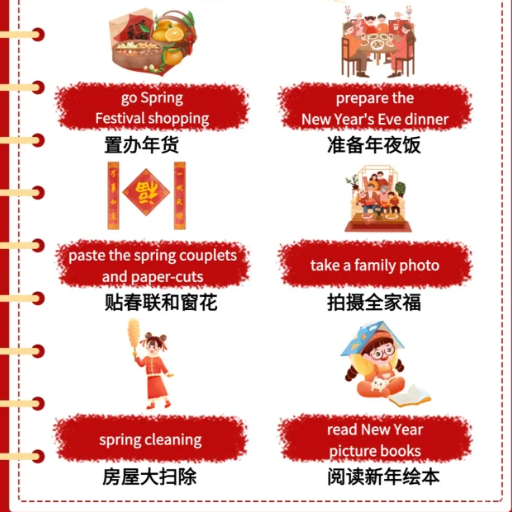
How do Chinese people prepare for and celebrate the New Year
Cleansing one’s abode in preparation for the Lunar New Year celebration includes cleaning and eliminating clutter. Lousy luck should be swept away, and good fortune must have ample space to arrive. To make it lively, families put up red banners and symbols. As the saying goes, “A picture is worth a thousand words.” Decorations indicate how people are feeling. In this case, families are feeling happy. In addition to decorating, it is also customary for people to make traditional foods, purchase new clothes, pay off outstanding debts, and get ready to greet the coming year.
The celebration itself includes family banquets where people gather in large numbers. Traditional delightful dishes such as dumplings and fish are served during the feasting. Eating is not all that goes on during a celebration; money is gifted in red envelopes also known as ‘Hongbao’ that are intended to bring good fortune. Hongbao comes along with fireworks that are lit to welcome wealth and prosperity. Festive activities such as lion dances and temple visits are also every day, which increases joy and activity in the community after a long period of inactivity.
Traditional customs and rituals leading up to the festival
A vital part of the celebration is “sweeping away the dust,” which refers to thoroughly cleaning and decluttering one’s home to prepare for the New Year. Sweeping away and decluttering removes lousy luck and allows a good chance to enter. Further, decorating using red paper cuttings, red spring couplets, and red lanterns is also widely practiced as part of the cleaning process. Red means happiness and serves the purpose of warding off evil spirits.
Families honor their ancestors with offerings of food and incense to show love and seek blessings for the family. They also settle disputes and pay off their debts so that they can start the New Year fresh, physically and emotionally. Fresh clothes and food are bought a few days before the New Year. These actions go hand in hand with the ideas of humanity, respect, and family.
The importance of family reunions and festive meals
Family gatherings and traditional meals enhance social well-being, preserve culture, and improve health. These gatherings allow different generations to share family stories and strengthen family roots. In addition to sustaining the family, these meals have symbolic meanings: dishes have prosperity, health, or longevity, alongside being traditional.
Celebrations like Lunar New Year and Thanksgiving require significant attention to detail when cooking signature dishes, including dumplings to signify wealth and turkey as the centerpiece during Western holidays. Families also ensure that every family member is well-fed with balanced meals containing proteins, carbs, and vegetables to promote health.
Apart from the food served, every gathering enhances the feeling of belonging and continuity. Studies have recognized the psychological benefits of regular family food consumption, including reduced stress and increased happiness. These occasions go beyond the food experiences and build a legacy of love, support, and tradition among family members.
Decorations and symbols associated with the celebration
When it comes to decorating for the celebration, I tend to focus on visual elements that are impactful and enjoyable. String lights, colorful table covers, centers of attention, and inviting decorations are typical. Family candles and flowers are other beautiful decorative items that symbolize unity and growth, and family-made crafts and quilted pieces are good sentimental and personal decorations. Lighting for such occasions should ideally come from warm LEDs set at a color temperature of 2700K-3000K for a cozy ambiance. Balanced color schemes can also be applied to the table settings for a more balanced celebratory theme, complementing the occasion with two to three colors rather than overdoing it and cluttering the space visually. Together, they create a warm, intimate, and festive atmosphere.
What are the most important Chinese New Year traditions?
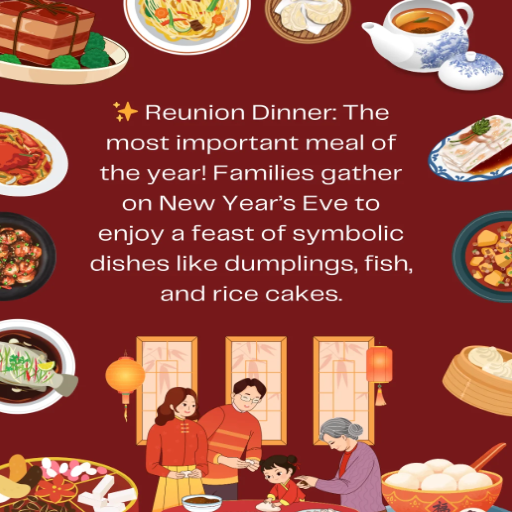
What are the most important Chinese New Year traditions
Celebrations for the Spring Festival, better known as Chinese New Year, come with protective symbols and traditions attached as elements of good fortune, family unity, and prosperity. Main customs include thoroughly cleaning the house to invite good luck, decorating with red lanterns, couplets, and paper cuttings, and hosting reunion dinners with symbolic dishes like dumplings and fish. A cherished practice meant to herald in blessings and wealth is gifting red envelopes, commonly known as hongbao. Firecrackers and fireworks chase away evil spirits while marking a joyful start to the new year.
The significance of red envelopes and gift-giving
During the celebration of significant occasions such as weddings, the Lunar New Year, and other noteworthy events, red envelopes and hongbao are gifted as a central tradition. Red is the color that represents happiness, energy, and prosperity, and when gifting it, it wishes the recipient good fortune and blessings. The amount of money inside also carries symbolic weight; for example, amounts like eight are considered particularly lucky, while amounts involving four are avoided because their pronunciation is similar to death in Chinese.
Gift-giving can also portray kindness and goodwill. Special care is taken to ensure that gifts are chosen carefully and are embedded with positive connotations. For example, oranges and tangerines are very popular due to their association with good o luck and abundance. At the same time, clocks and sharp-edged objects are avoided as they represent severance and endings. Red envelopes and gifts embody cultivating harmony, sharing blessings, and strengthening the importance of family and community.
Fireworks and their role in ushering in the new year
Like how the arrival of the new year fills our hearts with joy and new beginnings and puts lousy luck to rest, fireworks play a critical role in celebrating that joyous day. Their core stems from ancient traditions, especially in China, where firecrackers were infamously known to be set off to scare evil spirits. Even today, people all across the globe can appreciate the fusion of art and technology at its finest with breathtaking fireworks displays.
A fireworks pyrotechnic shell comprising different chemical compounds creates an exquisite sound, color, and propulsion combination. Some primary components are oxidizers like potassium nitrate, fuels such as charcoal, strontium, and barium, or other metallic salts for vivid red and green hues, respectively. The crafts consist of black powder, bursts, rings, and cascades of colors that can be achieved with the proper internal arrangements.
Fireworks must meet specifications to meet safety and efficacy requirements. The diameter of the shells, which ranges between 3 and 12 inches, determines the altitude and width of the display. A 3-inch shell can shoot up to 300 feet and have a diameter spread of 120 feet, while a 12-inch shell can go as high as 1,200 feet and spread almost 500 feet across. The timing and fusing of the bursts are so precise that they can be synchronized, often with music, during public celebrations for maximum effect.
Fireworks also represent cultural identity and social cohesion while simultaneously bringing joy beyond the scope of their functions. Although addressing issues like environmental or noise pollution by creating quieter fireworks or drone light shows is more straightforward, the magic they bring captures countless people’s eyes. Each New Year’s celebration becomes more festive than the last.
Lion and dragon dances: Their meaning and importance
In the Chinese culture, the lion and dragon dances symbolize prosperity, good fortune, and the cleansing of negative energy. The dances aid the festive celebrations for an occasion such as the Chinese New Year and require elaborate costumes, distinct and mesmerizing drumming, and superb choreography. As far as my knowledge goes, the lion dance often embodies power and wisdom; I believe it showcases these traits through the acrobatic performance of two dancers in the costume. The lion dance, on the other hand, shows the need for combined strength and oneness, making it so that many dancers have to harmonize their movements while controlling a long serpent figure for the dragon.
In terms of the lion, to achieve a strong appearance, the head is traditionally made from fur and decorated with sequins, which makes the body of the lion around 5 to 6 feet long. On the other hand, the dragon costume can be 10 feet long and extend to over 70 feet long, depending on the number of dancers. The performers also have different adjustable sections that aid movement. For authenticity, the drumming and other sources of rhythm for these performances have specific patterns like “Three Star Beating” to ensure the dancers follow correctly. Integrating all these elements helps showcase the heritage and its manifold and messless art form.
How does the Chinese zodiac play a role in the Spring Festival?
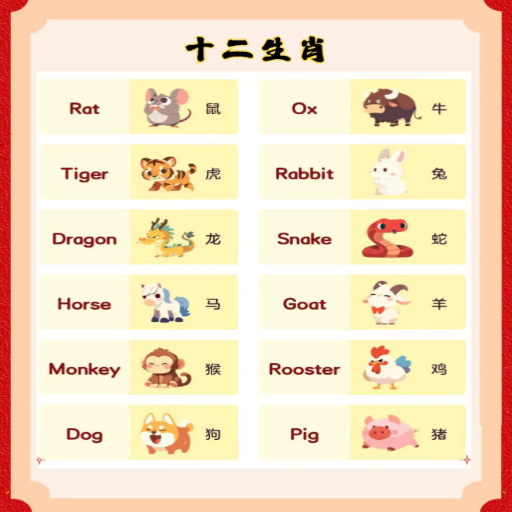
How does the Chinese zodiac play a role in the Spring Festival
The Spring Festival in China has varied traditions, decorations, and festivities influenced by the Chinese zodiac. Different animals in the zodiac cycle correspond with various traits and prosperity tales. Each year’s zodiac animal has its decorations, gifts, and performances. People also reflect on their lives, using zodiac signs to predict luck, love, and success for the following year.
Understanding the 12 animal signs and their rotations
Each year of the Chinese zodiac corresponds with one of the 12 animals. The most important aspect is the rotating order and the traits associated with each animal, which repeats every 12 years. The 12 animal signs follow Rat, Ox, Tiger, Rabbit, Dragon, Snake, Horse, Goat, Monkey, Rooster, Dog, and Pig.
This system’s rotation follows a lunar calendar, which could be slightly off the Gregorian calendar. For instance, the zodiac year starts on the Chinese New Year between January 21 and February 20. Each zodiac sign is also linked to one of the five elements (Wood, Fire, Earth, Metal, and Water), where each combination of animal and element creates a repeating 60-year cycle. With this structure, a person’s zodiac sign and the traits that come with it are determined by the animal of the birth year and the associated element.
Key aspects for understanding the zodiac cycle:
- Animal Cycle: Repeats every 12 years in a fixed sequence.
- Element Cycle: Repeats every 60 years, combining animals and elements.
- Start of Zodiac Year: Aligns with the lunar calendar, typically Chinese New Year.
- Cultural Significance: Predictions and traits related to the zodiac animal element provide a personal and social framework of belief.
This complex structure blends traditional philosophy, astronomy, and local customs.
The influence of zodiac animals on the coming year
The 12 zodiac animals have defining symbols and traits that influence how the year is experienced. For example, the traits tied to the Rabbit are peace, reflection, and creativity. Thus, if the Rabbit represents the year, it will be more peaceful in terms of energy. The elemental influence also determines the overall energy of the year. If Water is the dominant element, calmness and flexibility will dominate the year. Passion and change will be the year’s energy if the fire is the element.
Key Aspects:
- Zodiac Animal: Determines what the core theme will revolve around.
- Element Association (Wood, Fire, Earth, Metal, Water): Influences relationships and professional tendencies.
- Lunar Calendar Marks the beginning of the zodiac year (Chinese New Year).
- Astrological Compatibility: Different animals exhibit different interactions, which leads to more accurate forecasts of relationships and prosperity.
Understanding these facets makes it easy to outline personal goals and decisions that best suit the energy of the zodiac year.
What are the regional differences in celebrating Chinese New Year?
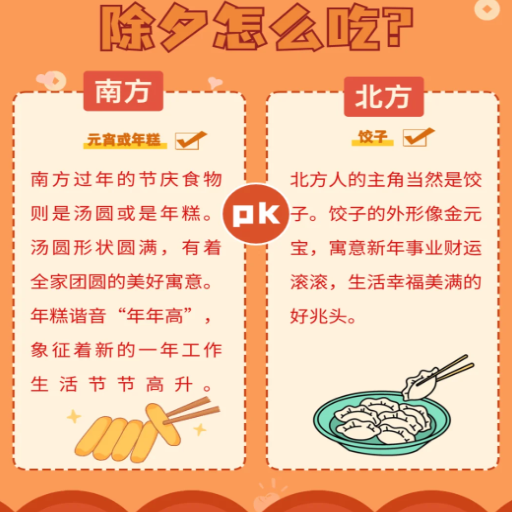
What are the regional differences in celebrating Chinese New Year
The way Chinese New Year is celebrated has great regional diversity due to cultural, traditions, and customs differences. For example, jiaozi, or dumplings, are usually emphasized in Northern China because Lapland, like Soongyukguk, symbolizes wealth and family unity, while the South prefers its niangao or glutinous rice cakes. The types of lion dances performed also differ; big cities in the South prefer lion dances, while the North is more inclined to favor dragon dances along with temple fairs. Even the festival’s folk customs, decorations, and observed rituals would vary depending on the Chinese community, showing how rich and diverse the culture is.
Unique Customs in Northern vs. Southern China
The difference in customs in the Chinese New Year celebration in the North and South highlights the rich culture of the Chinese people. Northern China focuses on making dumplings (jiaozi), which are served around midnight on New Year’s Eve. Dumplings symbolize wealth, as they are shaped like ancient gold ingots. Meanwhile, Southern China usually features glutinous rice cakes (Nian Gao), which represent progress and prosperity because people often associate the word “high” with “prosperous.”
Different regions also have unique performance styles. In the Southern region, for example, you can see sweeping lion dances, traditionally used to scare away evil spirits. However, in the North, grand dragon dances and temple fairs are part of the community’s lifestyle.
In terms of decoration, Northern China tends to utilize bright red paper cuts and couplets while worrying less about the designs themselves compared to the words, Southern regions however, have flowery designs to match the warmer climate and also the regional aesthetic preference.
These differences come together to form a unique blend of the region’s climate, availability of particular ingredients, and known local traditions.
How Chinese communities worldwide adapt the celebration
Chinese communities worldwide have transformed Lunar New Year commemorations by blending traditions with local characteristics. Cities such as San Francisco, Sydney, and London have erected large parades showcasing lion and dragon dances to combine Chinese culture with modern entertainment for a wider audience. Local food markets tend to offer Nian Gao and dumplings alongside local delicacies of the host country.
The local culture dictates how decorations are made. For example, red lanterns in Southeast Asia may be paired with fresh orchids, unlike in Northern Europe, where the focus is on indoor decoration, including string lights and papercrafts.
These transformations are not random, as certain factors influence them. The gathering and housing laws set regionally determine the size of parades and firework displays. At the same time, the local availability of glutinous rice and Chinese long noodles dictates how the traditional dishes are made. Family, unity, and prosperity remain and are celebrated in Chinese culture.
How long does the Chinese New Year celebration last?

How long does the Chinese New Year celebration last
The Chinese New Year celebrations last over 15 days, starting from the New Year’s Eve reunion dinner and culminating at the Lantern Festival. Traditions, cultural practices, and festive foods mark these days. The extended duration symbolizes a fresh beginning while hoping for wealth and prosperity in the new year.
Key dates and events during the celebration
- New Year’s Eve (Reunion Dinner)
The reunion dinner kicks off the celebrations with a family feast. Symbolic dishes like fish and dumplings are included in the dinner as they represent prosperity and wealth, respectively. Indeed, families partake in these meals while spending quality time together. Additionally, it is common for people to thoroughly clean their homes before the new Sichuan starts to remove any hindsight terrible luck.
- New Year’s Day (Day of Welcoming the Deities)
Meeting elderly relatives on the first day of the new year is a custom that must be observed. People exchange blessings with red envelopes, or Hongbao, filled with money during this. To kick off the day with great energy, firecrackers and lion dances are used to scare off evil spirits.
- Day 2 (Day of Married Daughters)
On the second day, married daughters are pardoned from all responsibilities and can celebrate with their families. Daughters are also expected and allowed to make prayer offerings to household gods and their ancestors, paying great tribute.
- Day 5 (Breaking Five)
The fifth day marks the birthday of the God of Wealth. For businesses, that often heralds the reopening of their doors, and firecrackers are set off in hopes of good fortune. This day is also celebrated for performing ceremonies that seek wealth for homes and workplaces.
- Day 7 (Renri or “Human Day”)
Renri translates to “Human Day,” commemorating the “birthday of all humans” and celebrates everyone’s shared “birth.” This day is celebrated by feasting on dishes like noodles and Yu Sheng, a raw fish salad for abundance.
- Day 15 (Lantern Festival)
The Lantern Festival marks the end of the New Year festivities in China. During the festival, lanterns are displayed for worship, dragon dances are performed, and people eat tangyuan, a sweet dumpling made of glutinous rice flour, to symbolize family reunion. Families delight in strolling under the bright full moon, which signifies the end of the lunar New Year period.
These key dates were created to celebrate and highlight everything festive about the Chinese New Year and its culturally essential activities in preparation for the new lunar year.
The Lantern Festival: Marking the end of the New Year period
Of all the festivals in China, the Lantern Festival, which occurs on the last day of the Lunar New Year, is exciting due to its eye-catching conclusion. The festival’s festivities include magnificent lanterns on display, breathtaking dragon and lion dances, and the glutinous sweet rice balls called tangyuan, which signify family harmony. Families appreciate the brilliantly crafted lanterns during the festival while soaking in the warmth and joy of this time of year. Culturally, it represents reconnecting with friends and family and is an ideal ending to the celebrations. From a design perspective, the lanterns are crafted from bamboo and paper, making them incredibly light. In addition, warm LED lights or candles are placed inside the lanterns, which sustain tradition while adding safety. The combination of all these features guarantees safety in this joyous celebration.
References
Frequently Asked Questions (FAQ)
Q: What is the Chinese Spring Festival, and when is it celebrated?
A: The Chinese Spring Festival, the Lunar New Year, is the most important traditional Chinese festival. According to the Chinese calendar, it marks the beginning of the new year and typically falls between late January and mid-February. During this celebration, people welcome the new year and bid farewell to the old year.
Q: How long does the Chinese New Year celebration last?
A: The Chinese New Year celebration, or Spring Festival, traditionally lasts 15 days. It begins on the first day of the first month in the Chinese calendar and ends with the Lantern Festival on the 15th. However, preparations often start much earlier, sometimes weeks in advance.
Q: What are some traditional customs associated with the Chinese Spring Festival?
A: The Chinese Spring Festival is associated with many traditional customs. These include thoroughly cleaning the house to remove bad luck, decorating with red lanterns and paper cuts, setting off firecrackers, giving red envelopes (hongbao) filled with money, and having reunion dinners with family. The festival is deeply rooted in Chinese culture and showcases the rich social practices of the Chinese people.
Q: How do people celebrate the Lunar New Year in different parts of China?
A: Celebrations can vary between North and South China and among different regions. For example, dumplings are typical in North China, while spring rolls and glutinous rice cakes are more prevalent in South China. Some areas have unique local traditions, such as the dragon and lion dances in Guangdong or the Yanshui Fireworks Festival in Taiwan.
Q: What is the significance of the “Little New Year” in Chinese festivals?
A: The “Little New Year,” typically falling about a week before the primary Chinese New Year, is part of the traditional preparations for the Spring Festival. It’s a time when people start to clean their homes, make offerings to the Kitchen God, and prepare for the upcoming celebrations. This custom highlights the importance of preparation in Chinese culture.
Q: How do Chinese people traditionally welcome the new year?
A: Chinese people traditionally welcome the new year with various activities. These include staying up late on New Year’s Eve (known as “crossing the year”), watching the Spring Festival Gala on TV, setting off firecrackers at midnight, and greeting each other with auspicious phrases like “Gong Xi Fa Cai” (wishing you prosperity) or simply “Happy New Year” in Chinese.
Q: What is the significance of the Chinese zodiac in the Spring Festival?
A: The Chinese zodiac plays a significant role in the Spring Festival. Each year is associated with one of 12 animal signs, which rotate in a 12-year cycle. For example, 2023 is the Year of the Rabbit, while 2024 will be the Year of the Dragon. People born in a particular year are said to have specific characteristics associated with that year’s animal. The zodiac is an integral part of Chinese culture and influences many aspects of the New Year celebrations.
Q: How has the celebration of Chinese New Year evolved in modern times?
A: While many traditional elements remain, celebrating Chinese New Year has evolved with modernization. Today, many people travel long distances to reunite with family, a phenomenon known as “chunky” or Spring Festival travel rush. Digital red envelopes have become popular, especially among younger generations. Additionally, the festival has gained international recognition, with celebrations held in many countries outside China, often organized by local Chinese associations.